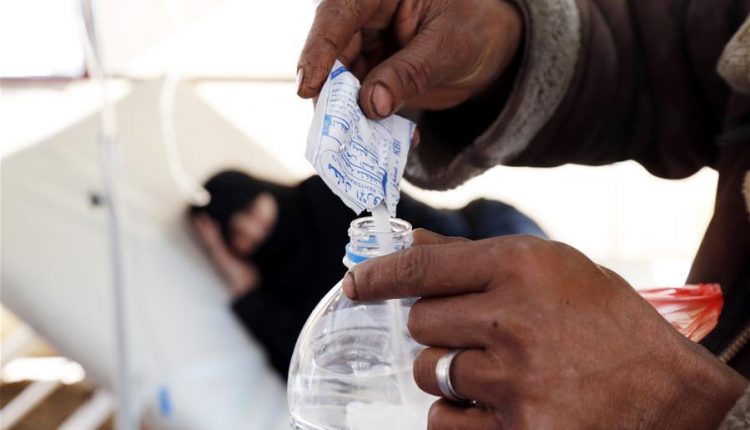Yemen cholera outbreak: 100,000 children infected since start of 2019
YemenExtra
SH.A.
More than 100,000 suspected cases of cholera have been reported among children under the age of 15 in Yemen since the start of the year 2019- more than twice the number during the same period in 2018.
Children account for close to half (45%) of all the new cases. Altogether there were 236,550 cases of suspected cholera between 1st January and 19th April 2019.
Of these, 105,384 were in children under 15. Almost half these cases were recorded in the last month alone – nine times as many as in the same time period last year.
Save the Children is warning that recent heavy rains, flash floods, fuel shortages and ongoing fighting despite the first steps towards a peace process in Stockholm last December, are adding to the chaos of four years of war to create perfect conditions for cholera to spread faster and further in the coming months.
Fuel shortages and a spike in fuel prices are limiting the pumping of sewage, clean water supply and garbage collection. Many families have been unable to take their children to health facilities because they cannot afford the soaring cost of transport. Many people rely on buying clean water from trucks, but with the rising fuel prices the cost is increasing, forcing some people to turn to dirty water sources.
Save the Children has warned that in places where fighting is continuing, the numbers could increase dramatically. It is feared that in Hajjah, in the northwest of the country, fighting could cut access to the only water source for 200,000 people who are already vulnerable to the disease because many have been displaced by this brutal war and face high levels of food insecurity.
After an outbreak infected more than 1 million people in 2017, the disease was partially contained during 2018.
In February the international community pledged $2.6 billion to the response to the war in Yemen – 65% of the money needed to meet humanitarian needs across the country.
Yet two months later, those pledges have largely failed to materialise. Only 4% of the funds needed for the health response have made it to agencies on the ground. For water, sanitation and hygiene, which will also be crucial in combating the spread of the disease, the figure is 10%.
“All parties should implement the Stockholm Agreement in good faith and return to the negotiating table to agree to a nationwide ceasefire and political settlement to finally end the crisis.”
Without treatment, cholera can kill within hours. Malnourished children have substantially reduced immune systems and are at least three times more likely to die if they contract cholera. Diarrhoeal diseases like cholera are also themselves a major cause of malnutrition.
Two million children under the age of five will need treatment for acute malnutrition this year, according to the United Nations.

